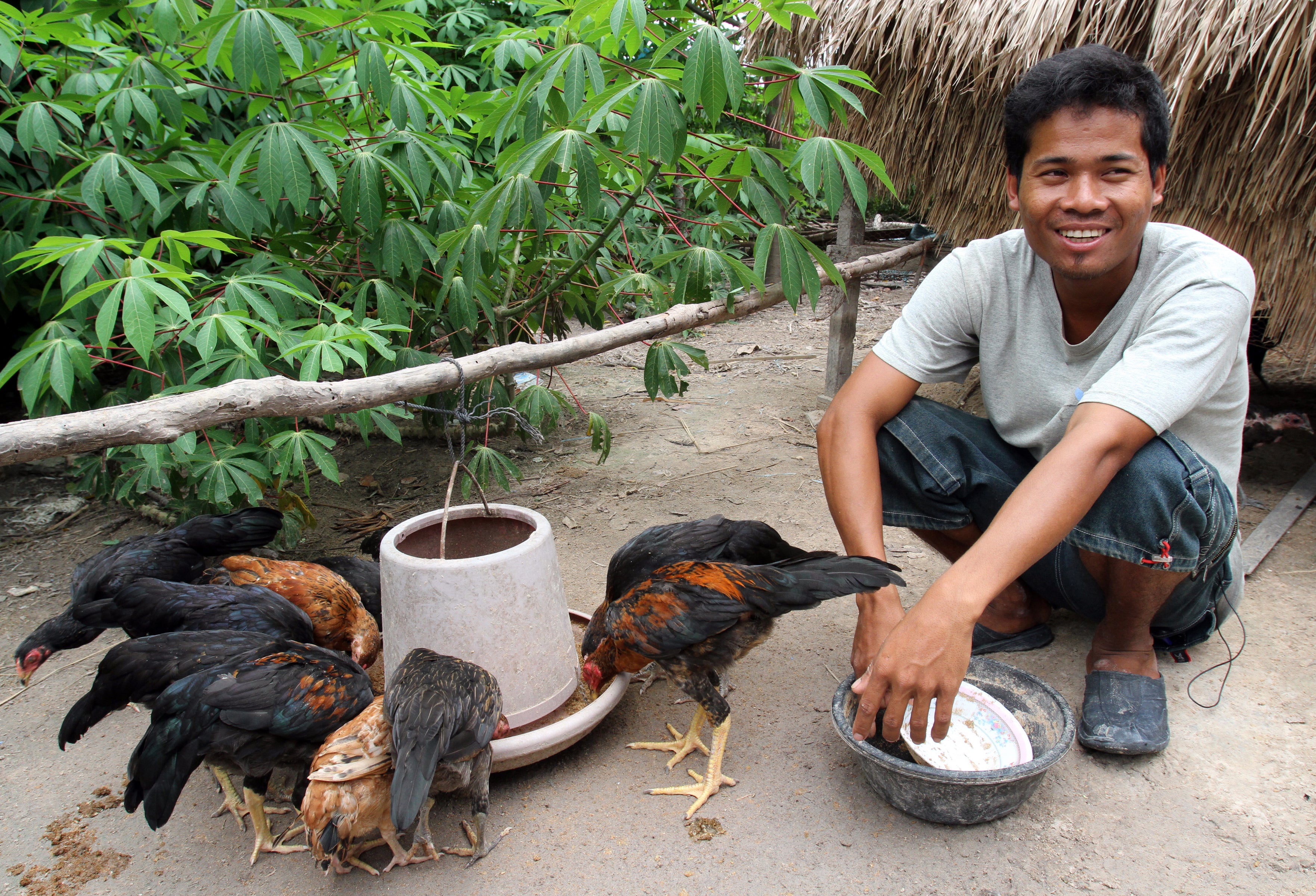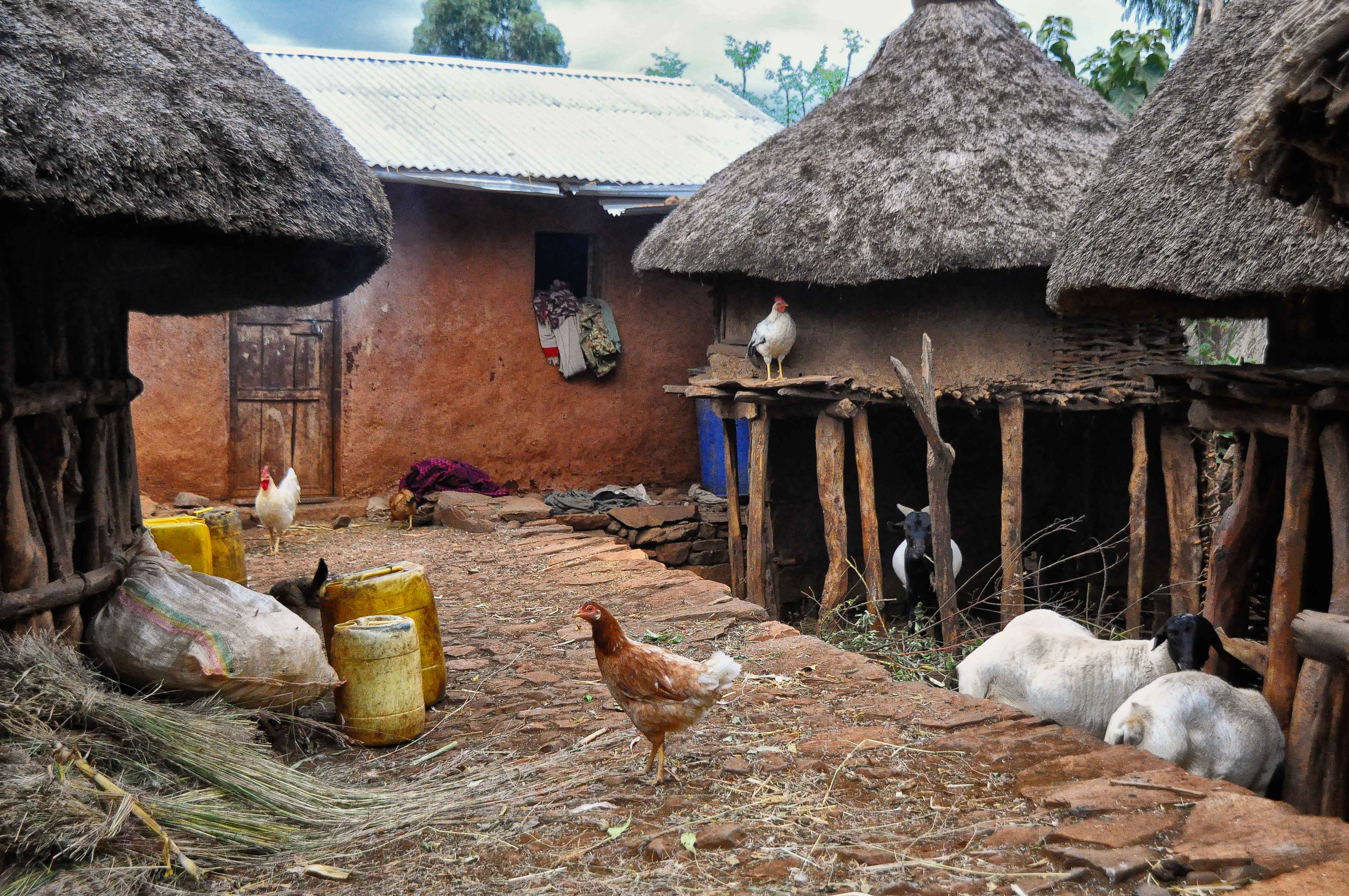
Those who have tried toilet training a pet dog or cat know that it is a difficult proposition. How about toilet training a flock of 30 chickens?
“Why would I want to?” Because in poor countries, chickens are everywhere, they are pooping wherever they want, and chicken feces is dangerous for young children.
How do we know this? In two papers released last year in the journals PLOS One and American Journal of Tropical Medicine & Hygiene, my coauthors and I investigated the emerging hypothesis that exposure to animal feces is a serious risk factor for infections and undernutrition in early childhood. Our work suggests that the predominant water, sanitation, and hygiene (WASH) focus on reducing exposure to human feces needs updating by including animal feces.
As far back as 1990, a study in urban Peru found that toddlers directly ingested chicken excrement. In 2013, a study of young children in rural Zimbabwe found the same problem. That team hypothesized that this isn’t just a risk factor for diarrhea; it might be an important cause for stunting, through a more invisible, “sub-clinical” and chronic form of damage to the gut, with the not-so-catchy name of environmental enteric dysfunction, or EED. While nutritionists have long speculated that infection in general may be a major cause of undernutrition, many are now increasingly convinced that EED is a prime suspect.
In 2016 we set out to test the indirect linkage between exposure to animal feces and undernutrition. In our first study, we took advantage of a large household survey in Ethiopia to add questions on whether villagers kept animals inside their main dwelling overnight. We reasoned that keeping animals indoors would likely mean more animal feces in and around the house. We knew that many Ethiopians kept their animals close, but we underestimated just how close: fully half of Ethiopian households keep chickens and children in the same building at night, but goats, cows and donkeys also get to sleep indoors on a regular basis. However, it was only the practice of keeping chickens indoors (mostly due to fear of theft and predation) that was associated with slower child growth, consistent with the findings of the earlier studies in Peru and Zimbabwe, where exposure to poultry was the main risk.
Strikingly, a smaller but more biologically oriented study from Bangladesh— which used the presence of chickens as its eligibility criterion, but also included other animals—found a similar result with a similar indicator: keeping animals indoors overnight was associated with both child stunting and EED symptoms .
In our second paper, we took advantage of the Alive and Thrive surveys in Bangladesh, Ethiopia and Vietnam. Alive and Thrive researchers had the good sense to ask their surveyors to visually assess the hygiene standards of every household they visited, including whether animal and human feces were observed in the compound. As in the first study, we were surprised by the scale of exposure to animals and animal feces. Around 40 percent of households in all three countries had animal feces in their compounds, whereas the presence of human feces was rare. And as in the first study, this exposure to animal feces was associated with slower child growth, even after controlling for many other dimensions of water, sanitation, and hygiene (WASH).
These findings are only suggestive (we didn’t randomly distribute animal feces!) but they are potentially of huge import. WASH interventions haven’t prioritized reducing exposure to animal feces because human feces are thought to be a more important risk factor for diarrhea. As one influential review from 2000 put it:
Whilst animal feces in food or water is a matter of current concern in developed countries, they may be of less relative importance in areas where human feces are disposed of inadequately... Further study is required… In the meantime, human stools should be regarded as public enemy number one.
In 2017 there are several very good reasons to reassess this conclusion.

First, there are a large number of free-roaming livestock in developing countries defecating in areas where children sit, play, crawl and explore. We used DHS surveys to assess livestock ownership across 42 developing countries: in most regions, over half of rural households own poultry, but so do significant numbers of urban households. In contrast, open defecation (by humans) is becoming increasingly rare: just 5 countries account for 75 percent of open defecation. This implies that in the majority of countries, exposure to animal feces is far more common than exposure to human feces .
Second, human feces may be a more important reservoir for diarrheal pathogens, but at least one study conjectures that animal feces could be a (relatively) more important reservoir for pathogens that cause EED and stunting. Indeed, a systematic review of WASH interventions have found them to have surprisingly little impact on nutrition... Perhaps because these interventions stopped short of addressing exposure to animal feces?
If animal stools really are such an important risk factor for undernutrition, the development community now needs to start thinking about to how combat this risk. Here are two recommendations:
- Start seriously incorporating control of animal feces into WASH policies and programs, like in experimental trials underway in Zimbabwe and Burkina Faso. WASH interventions have tremendous ability to raise community awareness of the risks of animal feces and to help communities find their own cost-effective solutions to this problem.
- Raise awareness of this issue in the agricultural sector, particularly among extension agents and veterinarians who advise farmers on livestock management. Improving chicken housing and corralling could greatly reduce exposure to chicken feces, though moving away from scavenging systems requires more feed and more time spent on providing feed and water, and on removing chicken feces from chicken houses. However, adoption of these practices can have the added benefit of improving the health and nutrition of chickens themselves. More hygienic, healthier chickens could also mean more hygienic, healthier kids .
Derek Headey is a Senior Research Fellow in IFPRI"s Poverty, Health, and Nutrition Division (PHND).


Join the Conversation